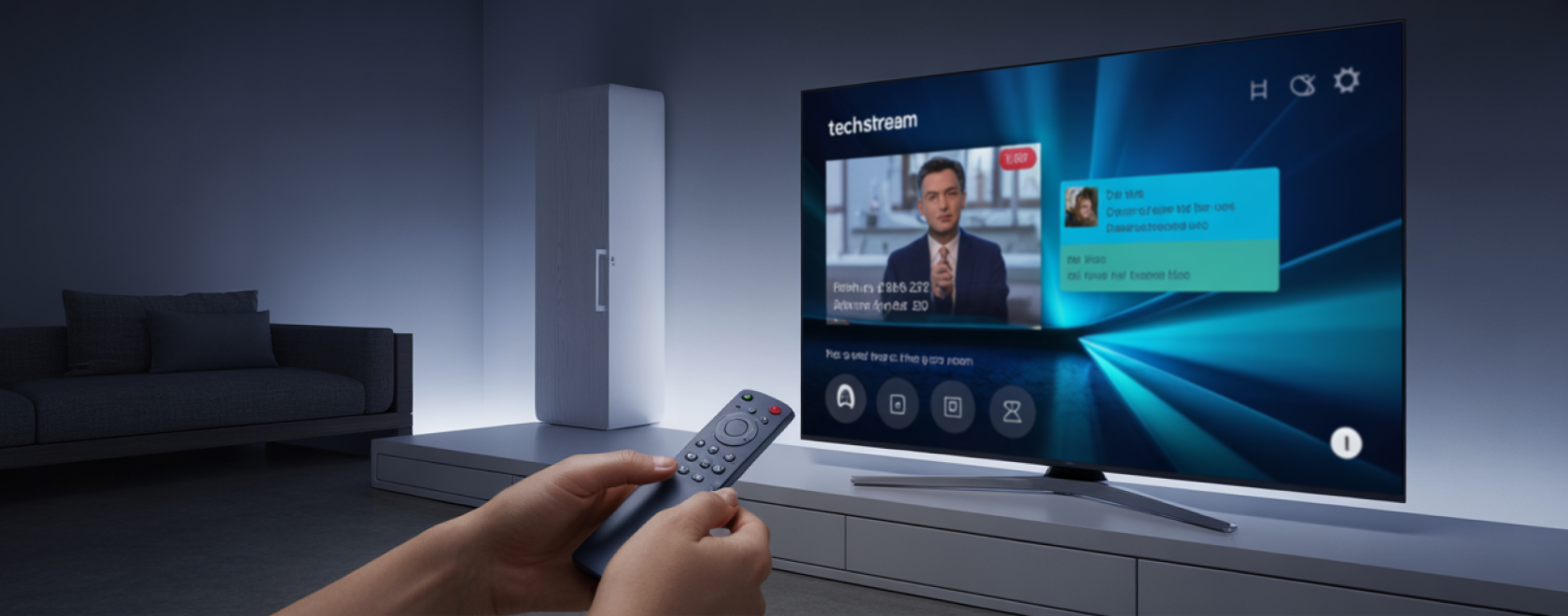In the world of digital entertainment, convenience and efficiency have become more than just desirable—they are essential. Today’s consumers want seamless access to multiple streams of content, simultaneous control over their smart environments, and the ability to navigate between apps without unnecessary interruption. One of the most compelling advancements in this space is multitasking functionality in modern IPTV set-top boxes and media players. Specifically, features like Picture-in-Picture (PiP) and dual-app operation are reshaping how users interact with their home entertainment systems. These tools elevate the user experience far beyond passive viewing, offering a level of interactivity that mirrors the multitasking behavior users already exhibit on smartphones and PCs.
Understanding Picture-in-Picture: A Window to Smarter Viewing
Picture-in-Picture (PiP) is no longer a novelty—it’s a core feature that defines premium media devices. At its core, PiP allows users to view a secondary video stream in a smaller window while continuing to use the primary screen for a different task. For IPTV and media player users, this typically means keeping a live TV broadcast playing in the corner of the screen while browsing a video library, checking the weather, or managing app settings.
This functionality relies on efficient hardware decoding and memory management. A robust chipset is required to render two video streams simultaneously without compromising playback quality or system stability. In devices equipped with quad-core or octa-core processors, combined with ample RAM (usually 2 GB and above), PiP runs fluidly, providing a near-instant response when resizing or repositioning the secondary window.
For sports fans, PiP offers the perfect balance between staying updated with a live match and browsing highlight reels. For families, it means the kids can keep watching cartoons while a parent quickly checks the home surveillance feed or adjusts smart home settings. In all use cases, PiP brings flexibility without forcing the user to stop or pause their content consumption.
The Value of Running Multiple Apps at Once
While PiP handles dual-video scenarios elegantly, the ability to run multiple applications side by side expands the scope of multitasking even further. On high-end media players, split-screen or floating window functionality opens doors to simultaneous app usage—such as watching YouTube in one half of the screen while chatting on Telegram in the other.
This capability is powered by an optimized version of Android OS or custom firmware developed specifically for media players. Unlike smartphones, these devices must prioritize video rendering while maintaining smooth interaction across applications. The system UI is typically modified to support drag-and-drop window resizing, fast app switching, and memory prioritization to avoid system lag.
For IPTV users, this could mean streaming a news channel in one window while browsing EPG (Electronic Program Guide) data in another, or comparing streaming service options without closing any sessions. In the context of productivity, it even allows a user to monitor a remote desktop session while keeping a video conference app open—a rare but valuable use case that adds to the device’s versatility.
Software Optimization: The Unsung Hero of Multitasking
Powerful hardware means little without software designed to exploit it. That’s why firmware design and system-level optimization are critical in multitasking environments. Vendors of high-quality IPTV boxes and media players invest significant resources into building responsive UIs that support gesture control, memory-efficient window management, and intelligent caching. This ensures that two or more apps can run without crashes or unexpected slowdowns.
Equally important is the compatibility of third-party apps. Not all applications are designed to support PiP or floating window modes. That’s why curated app stores—often included in premium devices—ensure that the available applications are fully compatible with multitasking features. Devices that offer root-level customization or advanced developer options may also allow power users to tweak memory limits or enable experimental multitasking tools for enhanced performance.
Real-World Benefits for Everyday Users
Multitasking features aren’t just technical gimmicks—they address real, everyday needs. Consider a user who wants to follow a cooking tutorial on YouTube while referencing a digital recipe in a browser. Or imagine someone who wants to follow a live financial news stream while tracking stock prices in a companion app. In both scenarios, multitasking eliminates the friction of constant app-switching and maintains workflow continuity.
Parents can benefit from the ability to run educational content in one window while monitoring their children through an IP camera app. Meanwhile, remote workers can project presentation material via casting while taking notes or interacting with team messaging platforms directly on the media device. These examples highlight how multitasking transforms a basic media player into a central home command center.
Choosing the Right Device for Multitasking
Not all IPTV boxes and media players are created equal. When selecting a device specifically for multitasking, it’s crucial to look for specifications such as a multi-core processor (preferably ARM Cortex-A55 or better), at least 2 GB of RAM, and support for Android 10 or higher. Devices equipped with advanced GPU support also tend to handle window rendering and animation transitions more smoothly.
Equally important is the availability of firmware updates and developer support. A device that receives regular software updates is more likely to stay compatible with the latest apps and maintain performance integrity over time. Brands that actively engage with user communities often incorporate multitasking feedback into their firmware revisions, leading to a better user experience overall.
Multitasking features like Picture-in-Picture and dual-app operation have redefined what consumers expect from IPTV set-top boxes and media players. These capabilities provide not only greater control and convenience but also extend the functionality of media devices well beyond simple streaming. As home entertainment continues to converge with smart living, multitasking will remain a key differentiator in choosing the right device.
By investing in a multitasking-capable media player, users gain not just a tool for watching content but a versatile hub for entertainment, productivity, and smart home integration. In a digital world that rewards flexibility and efficiency, such features are no longer optional—they are essential.
